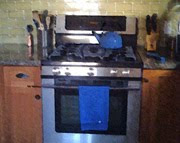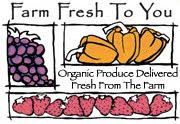
I thought I would be able to get away without making any cookies this holiday season.
Obviously, that was a naive thought.
It's been a bit of a strange year for me when it comes to holidays. For someone who loves to cook, the food-filled holidays of late fall and early winter should be a time to look forward to. But for some reason this year, I simply haven't been able to get my head into it.
I skipped out on Thanksgiving, choosing instead to spend the time on an adventure in London and Paris. I also planned a non-Christmas: rather than the norm of a decorated tree, a trip to Washington state and presents, I am escaping to Hawaii for a brief winter vacation with JR, my mom, and brother. I did not decorate anything. I have not bought a single gift. I did not send any cards. I thought I would be able to skip out on the baking that typically goes along with the holiday season as well.
Truth be told, I could have. But I was at Melissa's last week and we made these really tasty white chocolate peppermint cookies for John's cookie exchange that kind of got me in the mood to bake. We had our work team's holiday gathering earlier this week, and I decided to make some cookies for the occasion.
These turned out quite tasty: chewy and spicy, with a flavor like gingerbread men without the hassle of rolling and cutting. They pair perfectly with a glass of eggnog (one holiday treat that I knew going in that I wouldn't be able to do without). The recipe is from Mary Engelbreit's Cookies Cookbook, which I bought in college and has since gone out of print. I had originally been planning to make my favorite sugar cookies from this book, but opted to try something new instead. I also made shortbread cookies dipped in chocolate and pistachios that I'll post soon.
In the meantime, I wish you and your loved ones a very merry Christmas. Personally, I am looking forward to the soon-to-come new year and the new adventures that it is sure to bring.
Ginger Crinkles
Makes about 3 dozen
1/2 c. unsalted butter
1/4 c. unsulphured molasses
2 c. all-purpose flour
1 c. granulated sugar
1 tsp. baking powder
1 tsp. baking soda
2 tsp. ground ginger
1 tsp. ground cinnamon
1/4 tsp. ground cloves
1/4 tsp. ground nutmeg
2 large eggs, beaten
2 tsp. vanilla extract
confectioners' sugar, for coating
Melt butter and molasses in a large saucepan. Allow to cool.
In a large bowl, stir together flour, granulated sugar, baking powder, baking soda, ginger, cinnamon, cloves, and nutmeg.
Whisk the eggs and vanilla into the cooled butter mixture. Stir into dry ingredients until blended. Cover and refrigerate 2 hours or overnight.
Preheat oven to 350 degrees.
Roll dough into 1-inch balls. Roll in confectioners' sugar to cover and set 3 inches apart on parchment paper lined baking sheets. Bake about 14 minutes, until cookies have puffed up and sunk and are set around edges.
Allow to cool on baking sheet for 2 minutes, then transfer to wire racks to cool completely.







































